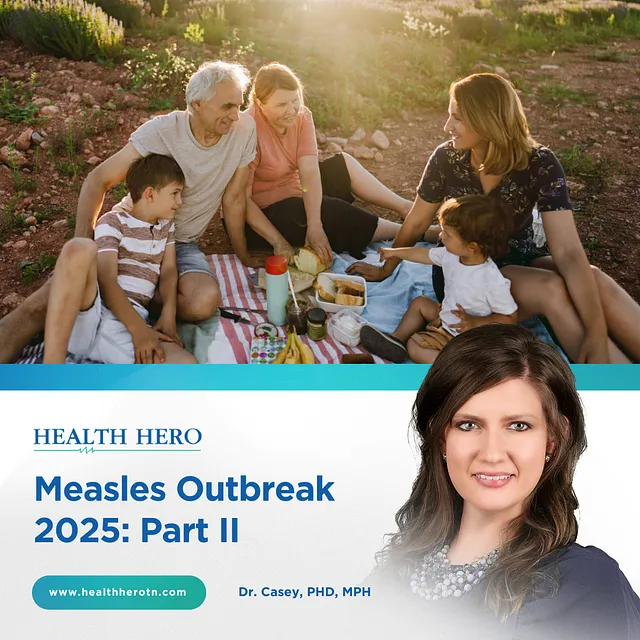As we enter February, a common sickness that surfaces around this time is mumps. This infection has been around for a long time, probably longer than you think, but its impact on children and adults hasn’t changed. Mumps is a sickness that spreads easily from one person to another, making people feel tired and achy, and causing their cheeks to puff up. Sometimes, mumps can impact the brain, pancreas, or even the ears, which can lead to hearing problems. The good news is that there is a way to avoid contracting this virus, and that’s through vaccines. But how did we figure out how to stop mumps? The story is a great example of scientific excellence, medical innovation, and vaccine effectiveness.
The First Mumps Cases
The mumps can be dated all the way back to around 410 BC when it was written down in a journal. The individual who wrote about mumps noticed that people’s cheeks swelled up and that they felt sick for a while, but usually got better. This was one of the first times anyone wrote a description of what we now know as mumps.
1934 — Scientists Discover What Causes Mumps
Fast forward all the way to the 20th century; this disease kept appearing, but no one knew exactly what was causing it. Then, in 1934, two scientists discovered that mumps was caused by a virus. They figured this out by studying monkeys that got sick from a virus found in people’s saliva. This discovery was important because it was the first step in helping doctors determine how they could develop a potential vaccine.
1945 — The First Step Toward a Mumps Vaccine
In 1945, scientists had another breakthrough. They were able to isolate the virus and began studying it. Just a few years later, in 1948, scientists were able to create a vaccine that could help protect people. As time went on, this first vaccine didn’t work for very long, but that didn’t stop them from continuing to try to make it better.
1967 — A Doctor Helps His Daughter and the World
One day, a little girl named Jeryl Lynn became infected with mumps. Her dad, Maurice Hilleman, was a scientist and decided to use the virus from her sickness to make a vaccine. In 1967, his vaccine was approved. This was the tipping point that led to the first robust vaccine, ultimately helping millions of people stay healthy. This special strain is still used in mumps vaccines today.
1971 — Measles, Mumps, and Rubella Vaccine
Instead of giving kids separate shots for measles, mumps, and rubella, scientists decided to combine them into one vaccine called MMR. This made it easier for kids to get protected from all three diseases at the same time. A second dose was added in 1989 to help the vaccine work even better.
1998 — A Major Setback for the MMR Vaccine
In 1998, a doctor named Andrew Wakefield wrote a report in which he falsely suggested that there was a possible link between the MMR vaccine and autism. His study, which involved only 12 children, claimed that they had developed gastrointestinal issues and signs of autism after receiving the vaccine.
Despite the small sample size and lack of scientific evidence, the study generated widespread fear and led to a decline in vaccination rates, especially in the United States. His research was eventually proven false, and his study was retracted. However, many people got scared and stopped getting the MMR vaccine, which made mumps cases go up again.
2009 — No Link Between Vaccines and Autism
To ensure vaccines were safe, scientists did many studies, and in 2009, a special U.S. court ruled that there was no link between vaccines and autism. Doctors around the world agree that vaccines are safe and important for keeping kids healthy.
2018 — Mumps Comes Back in Some Places
Even though vaccines have been proven to work, scientists found that the mumps vaccine doesn’t last forever. Some adults who got the vaccine as kids started getting mumps again. Doctors are now thinking about giving older kids and teenagers a booster shot to keep them protected for longer.
How Many People Has the Vaccine Helped?
Before the vaccine was created, about 162,000 people got mumps every year in the U.S. But thanks to vaccines, only 429 cases were reported in 2023. That means the vaccine has saved millions of kids from getting sick and having serious problems like deafness or brain infections.
The Future of Mumps Prevention
Even though mumps is rare today, scientists continue to work to ensure the vaccine is at its best. Children may need an additional dose beyond the two they receive as infants and young children to ensure prolonged protection. One thing is for sure, getting vaccinated is the best way to keep mumps away.
Sources:


